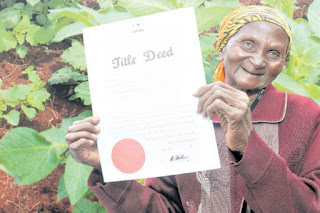immovable
property needs to be valued for sale and purchase to determine the price
payable. Financial Institutions, Banks and moneylenders insist on valuation of
immovable property to ascertain the margin available, worth of the security
offered to Loans. It is a prerequisite for financing Home Loans. Generally the
financial institutions or the housing finance companies get the property valued
by their appointed approved values, while the tax authorities follow valuation as per tax laws and the land
and building method.
Valuers are usually engineers or
architects appointed by the Central Board of Direct Taxes under Section 3A of
Wealth Tax Rules 1957. They are also members of the Institution of Valuers,
which, incidentally, has a branch in Bangalore. These valuers do not have any
personal interest in the properties, which they value.
There are various factors, both
controllable and non-controllable, which affect the fair market valuation.
Non-controllable factors are macro-economic conditions, political stability,
government policy, and price index. Controllable factors are location, ondition
of the property, its surroundings, reputation of the seller; whether the
property is free hold or Lease hold, purpose for which the property can be
used, whether the building byelaws are applicable, floor area ratio permitted,
nature of the soil, size of the plot, occupant of the property, the shape of
the property frontage available and nfrastructure available. With the vaastu
being the rage of the day, the shape, road facing also play vital roles.
Any seller who is moderately
intelligent and prudent, would not accept a price lesser than the market value.
The same goes for any purchaser who would definitely not pay more than the
market value at any given time. Thus, fair market value is the price, that a
normal prudent willing owner/seller, not obliged to sell; may reasonably hope
to get from a normal prudent and willing purchaser, with regard to its existing
conditions, with all its merits and demerits, and its potential possibilities.
It is to be noted that the fair market value of the same property keeps
changing and valuation is relevant to the time of valuation. Various methods
and techniques are adopted to value the property and arrive at a fair market
value. They are as under:
This is most the frequently used
method and is used by direct tax authorities with slight modification. The cost
of the land is arrived by referring to the recent sales in the area. The cost
of the construction of the building is arrived which is reduced by the
permitted depreciation. Other infrastructural factors like availability of
water, power connection and the relevant deposits are also considered. Some
valuers consider the government rates fixed for the land instead of market
value. Tax authorities follow this method by some modifications, wherein the
cost of rebuilding the structure on the land less allowable depreciation is considered.
In this method, sales of the
adjacent immovable properties having similar merits and demerits;
with bonafide intentions; transactions between willing seller and willing
purchasers are . considered. The proximate date of valuation and the date of
sales are very important. Generally it is assumed that an actual transaction,
with respect to specific property of recent date is a reasonable guide.
Unregistered sale transactions and agreement to sell are not considered. All
the available sales of adjacent immovable properties with the proximate dates
are to be considered and one cannot pick and choose. This method is more
convenient, reducing the element of speculation to minimum.
This is based
on rental income of the property. In this method gross annual rental income of
the property is arrived. From out of the gross rental income and the outgoings
to maintain the building and statutory outgoings are deducted.The available net
rent is multiplied by certain preconceived number of years. The multiplier
factor is very important. In early part of 1950's, the multiplier factor was 20
years rent, having regard to the rate of interest on gilt-edged securities.
This
was gradually changed in 1960 during which period the banks offered interest at
the rate of 7 % to 10% and at present, the rate of interest is reduced on bank
deposits as well as gilt edged securities. In certain cases the net rental
value is multiplied by the remaining age of the building. This method suffers
from certain limitations. The rent may be unreasonably high or unreasonably
low. The property might have been let out long ago and rent might have remained
unchanged for years. This method is more suitable in case of residential
property where is the property is let out recently on prevailing rents /
standard rent.
In this method,
the value of the property is arrived by adopting different methods such as Land
and Building Method, Rent Capitalization Method etc., and the average value of
all these methods is arrived at.
This is akin to
rent capitalization method. However, the Standard Rent under rent control act
is used to arrive at the gross rent.
There are
experts in valuation of immovable properties with necessary expertise on
subject of valuation and have acquired sufficient practical experience in the
field. They are capable of forming independent opinion. The expert must be
given sufficient time to analyze the issue and arrive at the valuation of
immovable property. The opinion of
the expert is admissible in evidence.
the expert is admissible in evidence.
The person who
owns property falling under Wealth Tax Act 1957 has to disclose the market
value of the property and pay taxes accordingly. The disclosures made by the
owner in his wealth tax returns should be a good indicator of the market value
of the property. This market value is more relevant and finds favour with the
government while compensating the owner on acquisition. However, the values
disclosed in Wealth Tax Returns cannot be deciding or conclusive in determining
the fair market value but throws some light on the issue.
For
More...........:



